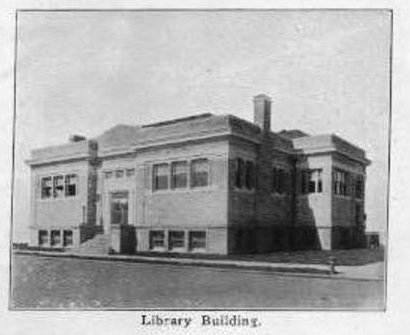Andrew Carnegie, a steel magnate, was a philanthropist who began building libraries in the United States in the early 1900s. In 1911, he offered the City of Albany $12,500 to build a free public library provided they match his donation and staff the new building. The final building cost came to $20,000.

As early as 1907, Sarah Adams, then president of the Modern Travelers Club, initiated the idea of a public library by creating a committee to gather a collection of books and naming a board of directors. A single-room brick building near Second and Ferry was selected to house the collection. They were open to the public on Monday, Wednesday, and Friday. Over the next few years, the club gathered 1,163 volumes.
The library became a tax-supported service in December 1910 when the City of Albany assumed the operation of this library. The response from the Andrew Carnegie Foundation grant came from Carnegie’s secretary in the form of a simple pencil written letter. This original letter is on display today.Mr. and Mrs. S.E. Young donated the land on the corner of Third Avenue and Ferry Street. Ground was broken for the building on June 5, 1913. Mr. Willard F. Tobey was chosen as the architect. Mrs. Young herself carried in the first book, a Bible, three days prior to the building’s dedication on June 26, 1914. A community of volunteers carried the collection, then totaling 3,200 volumes, into the new facility.
The Downtown Carnegie Library has been in continuous use as a library since the dedication in 1914. It currently houses nearly 23,000 titles for public use, provides public Internet access, a reference workstation, a special Historic Preservation book collection, and a newly relocated Children’s Room in the lower level. It is included as a landmark contributing property in the Monteith National Register Historic District of Albany.
